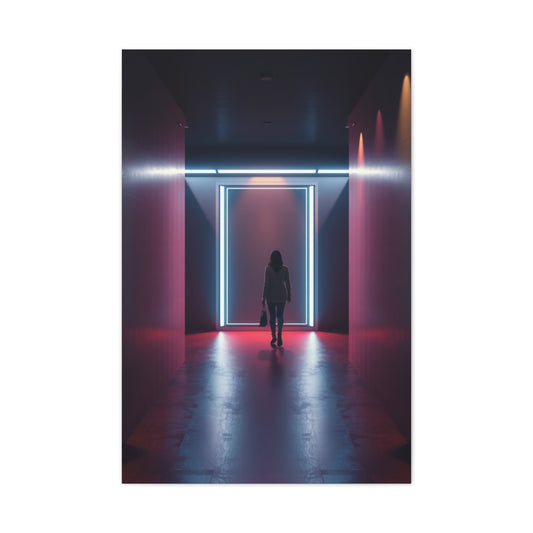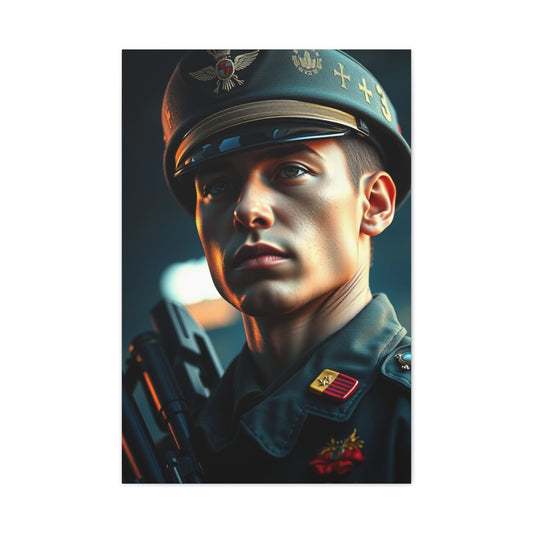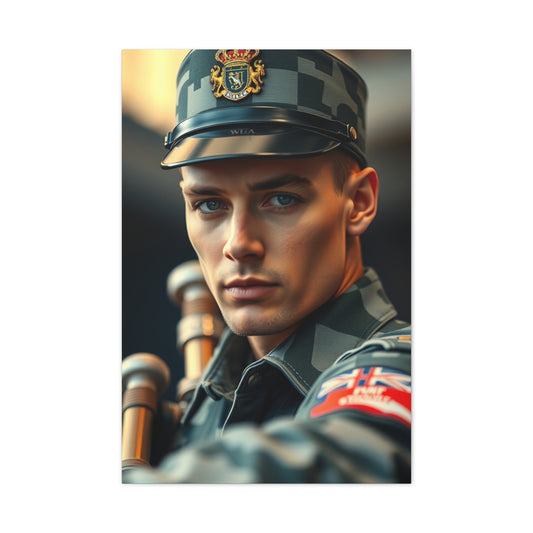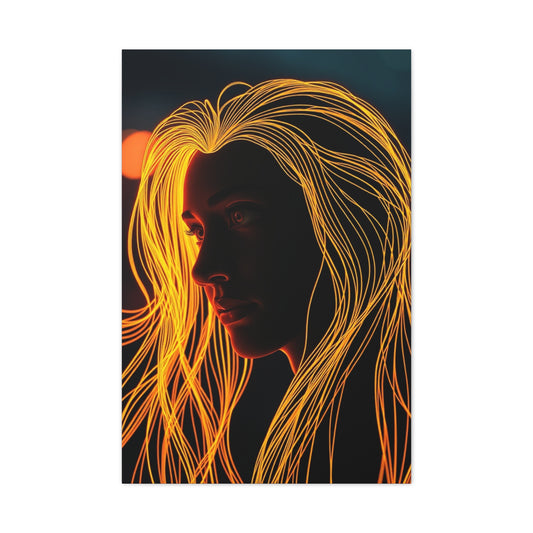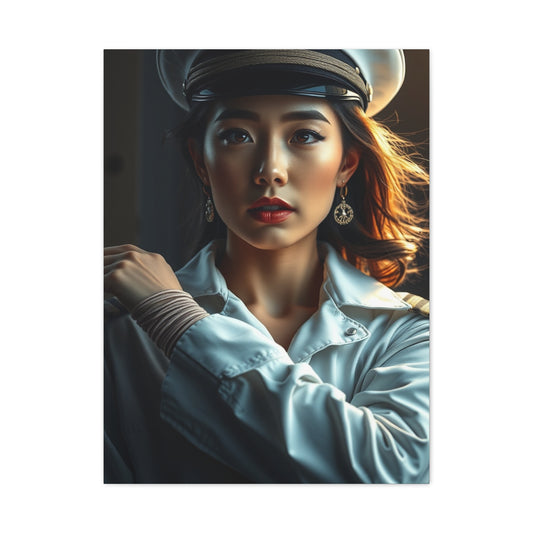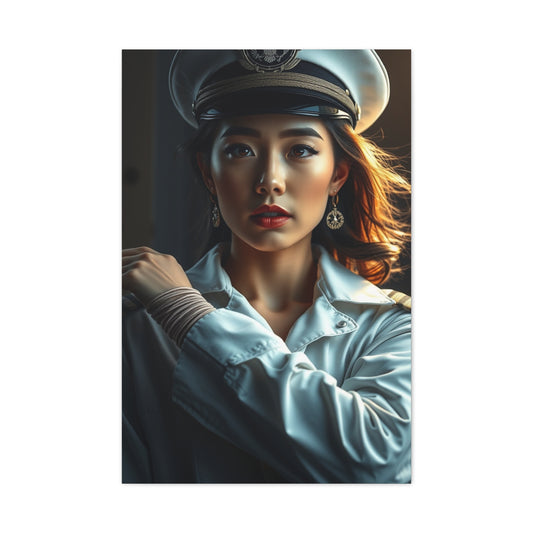The fundamental principle of economical interior design revolves around the timeless wisdom that authentic personal style transcends monetary limitations. This philosophy embraces the concept that meaningful spaces emerge from genuine appreciation of beauty rather than extravagant expenditure. The misconception that budget-conscious design inevitably results in uninspiring interiors represents a significant fallacy that prevents many homeowners from achieving their aesthetic aspirations.
Contemporary budget-friendly interior design demonstrates remarkable sophistication through strategic resource allocation, creative problem-solving, and innovative material utilization. These approaches challenge traditional assumptions about luxury and exclusivity while proving that exceptional design quality remains achievable regardless of financial constraints. The key lies in understanding fundamental design principles and applying them judiciously through thoughtful planning and creative execution.
The evolution of affordable interior design has been accelerated by technological advances, globalization of manufacturing, and the democratization of design knowledge through digital platforms. These developments have created unprecedented opportunities for budget-conscious homeowners to access high-quality materials, professional guidance, and innovative solutions that were previously available only to affluent clients.
Modern economical design strategies encompass diverse approaches including upcycling, repurposing, strategic investment in key pieces, and creative DIY implementations that maximize visual impact while minimizing financial investment. These methodologies require careful planning, creative thinking, and sometimes additional time investment, but they consistently deliver exceptional results that rival expensive professional installations.
The psychological benefits of creating beautiful spaces within financial limitations often exceed those achieved through unlimited budgets. The creative challenge stimulates innovative thinking, develops practical skills, and creates deeper personal connections to living spaces through active participation in the design process. This engagement fosters greater appreciation and satisfaction with final outcomes than passive consumption of expensive design services.
Resource optimization in budget interior design extends beyond simple cost reduction to encompass environmental sustainability, community support, and skill development that provide long-term benefits beyond immediate aesthetic improvements. These holistic approaches create value that extends far beyond visual appeal to include personal growth, environmental responsibility, and community engagement.
Strategic Wall Treatment Solutions for Maximum Impact
Wall treatments represent one of the most cost-effective methods for achieving dramatic interior transformations while remaining within modest budget parameters. These surface applications provide exceptional value through their ability to completely alter spatial perception, establish design themes, and create sophisticated focal points without requiring extensive structural modifications or expensive installations.
Wallpaper applications have experienced remarkable renaissance through technological innovations that have improved quality, simplified installation procedures, and expanded design possibilities while maintaining affordability. Contemporary wallpaper options encompass diverse styles ranging from subtle textures to bold patterns, enabling homeowners to achieve professional-quality results through careful selection and proper installation techniques.
The strategic implementation of wallpaper accent walls creates maximum visual impact while minimizing material costs and installation complexity. This approach concentrates decorative investment on single focal walls while maintaining neutral treatments on remaining surfaces, creating balanced compositions that appear professionally designed despite minimal financial investment.
Quality considerations for budget wallpaper selection should emphasize durability, ease of installation, and long-term aesthetic appeal rather than solely focusing on initial cost savings. Investment in slightly higher-quality materials often provides superior long-term value through extended lifespan, easier maintenance, and better appearance retention over time.
Installation techniques for DIY wallpaper application require careful preparation, proper tools, and systematic execution to achieve professional-quality results. These skills can be developed through online tutorials, practice on sample areas, and gradual progression from simple patterns to more complex installations as confidence and expertise develop.
Color psychology considerations in wallpaper selection can significantly influence spatial perception, mood enhancement, and overall satisfaction with interior environments. Understanding these psychological effects enables informed decision-making that maximizes the emotional and aesthetic benefits of wallpaper investments while ensuring long-term compatibility with evolving preferences.
Maintenance strategies for wallpapered surfaces should be established during selection and installation phases to ensure long-term beauty and functionality. Proper care techniques, appropriate cleaning methods, and preventive measures can significantly extend wallpaper lifespan while maintaining optimal appearance throughout extended service periods.
Innovative Space Division and Organizational Solutions
Spatial organization represents a critical aspect of economical interior design that can dramatically improve functionality and aesthetic appeal without requiring expensive structural modifications. Creative partition solutions provide opportunities for defining distinct functional areas while maintaining spatial flow and maximizing perceived room dimensions through intelligent design implementation.
Repurposed furniture pieces offer exceptional value for partition applications through their combination of functionality, aesthetic appeal, and cost effectiveness. Vintage screens, bookcases, and folding panels can be acquired affordably from secondhand sources and customized to meet specific spatial requirements while contributing unique character and historical interest to contemporary interiors.
DIY partition construction enables complete customization of spatial division solutions while providing opportunities for skill development and creative expression. These projects can incorporate reclaimed materials, innovative fastening systems, and personalized design elements that reflect individual preferences while maintaining professional appearance and structural integrity.
Glass partition applications provide spatial division while maintaining visual connectivity and light transmission between areas. These solutions prove particularly valuable in compact spaces where complete separation would create claustrophobic conditions or reduce natural light distribution to unacceptable levels.
Flexible partition systems enable adaptive spatial configurations that respond to changing functional requirements throughout daily routines and seasonal variations. These systems provide long-term value through their ability to accommodate evolving needs without requiring complete reinstallation or significant additional investment.
The integration of storage solutions within partition designs maximizes functional efficiency while minimizing spatial footprint and material costs. These dual-purpose installations provide exceptional value through their ability to address multiple functional requirements while contributing to overall aesthetic composition and spatial organization.
Height considerations for partition installations significantly influence their effectiveness in spatial organization and visual impact. Carefully planned heights can create intimate zones while maintaining spatial connectivity, or provide complete separation when privacy and sound control become priorities.
Decorative Accessories and Wall Enhancement Strategies
Wall accessories represent highly cost-effective methods for personalizing interiors while creating sophisticated focal points that enhance overall design quality and visual interest. These decorative elements provide opportunities for incorporating personal collections, family heirlooms, and artistic expressions without requiring significant financial investment or structural modifications.
Mirror applications offer exceptional value through their dual functionality as decorative elements and spatial enhancement tools. Strategic mirror placement can dramatically increase perceived room dimensions, improve natural light distribution, and create sophisticated decorative focal points that rival expensive artwork installations.
Thrift store exploration provides access to unique decorative accessories that offer superior character and craftsmanship compared to mass-produced alternatives. These venues often contain hidden treasures including vintage mirrors, artwork, and decorative objects that can be acquired at fraction of their original retail costs.
Family heirloom integration creates deeply personal decorative installations while honoring family history and cultural heritage. These pieces often possess superior craftsmanship and historical significance that cannot be purchased, making them invaluable components of personalized interior design schemes.
Metal accent applications including decorative plates, sculptural elements, and functional hardware create sophisticated visual interest through their reflective properties and textural contrast. These elements can be sourced affordably while providing long-lasting beauty and maintenance-free operation.
Grouping strategies for wall accessories enable creation of compelling compositional arrangements that maximize visual impact while maintaining balanced proportions and cohesive aesthetic themes. These arrangements can evolve over time through addition of new pieces and reconfiguration of existing elements.
Lighting integration with wall accessories enhances their visual prominence while creating dramatic shadow patterns and textural emphasis that adds depth and sophistication to interior compositions. These lighting applications can often be achieved through strategically positioned accent lights or natural light optimization.
Artistic Expression and Creative Wall Applications
Artistic wall treatments provide exceptional opportunities for personal expression while creating unique decorative focal points that cannot be replicated through purchased accessories. These creative applications enable homeowners to develop artistic skills while producing customized decorative elements that perfectly reflect individual preferences and design visions.
DIY wall art creation encompasses diverse techniques ranging from simple painting projects to complex mixed-media installations that can be accomplished with basic materials and tools. These projects provide creative satisfaction while producing unique decorative elements that contribute significantly to overall interior character and personal meaning.
Folk art inspiration offers rich sources of design motifs that can be adapted for contemporary interior applications while honoring cultural traditions and artistic heritage. These designs often possess timeless appeal and deep symbolic meaning that creates lasting satisfaction and cultural connection.
Floral art applications provide natural beauty and organic visual interest that creates calming, nurturing environments particularly suitable for bedrooms, living areas, and spaces dedicated to relaxation and contemplation. These designs can be executed through various techniques including stenciling, hand-painting, and collage applications.
Abstract artistic expressions enable exploration of color, form, and composition without requiring representational accuracy or advanced technical skills. These approaches encourage creative experimentation while producing contemporary decorative elements that complement modern interior design themes.
Collaborative artistic projects involving family members create meaningful shared experiences while producing unique decorative elements that commemorate family creativity and cooperation. These projects often become treasured family memories while contributing beautiful and personally significant decorative features.
Seasonal artistic adaptations enable regular refreshing of interior environments through temporary or easily changeable artistic installations. These approaches maintain visual interest while accommodating evolving preferences and seasonal celebrations without requiring permanent commitments or expensive replacements.
Strategic Color Implementation for Maximum Visual Impact
Color application represents one of the most powerful and economical tools available for interior transformation, capable of completely altering spatial perception, mood, and aesthetic character through strategic implementation of paint and coordinated accessories. Understanding color theory and psychological effects enables homeowners to achieve sophisticated results that rival expensive decorative installations.
Accent wall strategies concentrate color investment on single focal surfaces while maintaining neutral backgrounds that provide visual balance and prevent overwhelming small spaces. These approaches maximize color impact while minimizing material costs and enabling future modifications without complete repainting requirements.
Window frame emphasis through contrasting colors creates architectural definition and visual interest that enhances natural light sources while drawing attention to exterior views and garden features. These applications require minimal paint quantities while producing dramatic visual improvements that enhance overall interior appeal.
Color coordination strategies ensure harmonious relationships between wall colors, furnishings, and accessories while maintaining visual coherence throughout connected spaces. These approaches prevent jarring transitions and create sophisticated color narratives that demonstrate professional design sensibility despite modest budgets.
Small space color applications require careful consideration of psychological effects and spatial perception to avoid overwhelming compact rooms while maximizing visual appeal and functional comfort. Light colors generally enhance spatial perception, while strategic dark accents can create sophisticated contrast and definition.
Paint quality considerations should balance initial cost savings with long-term performance characteristics including coverage efficiency, durability, and color retention. Investment in superior paint quality often provides better long-term value through reduced maintenance requirements and superior appearance retention.
Color sampling and testing procedures prevent costly mistakes while ensuring optimal color selection for specific lighting conditions and existing furnishing coordination. These preparatory steps require minimal investment while preventing expensive corrections and ensuring satisfaction with final results.
Space-Efficient Furniture Solutions and Storage Innovations
Wall-mounted furniture installations provide exceptional value through their combination of space efficiency, cost effectiveness, and design versatility while eliminating floor space requirements that can make small rooms appear cramped and cluttered. These solutions prove particularly valuable in compact living situations where maximizing usable floor area becomes essential for comfortable habitation.
Floating shelf systems offer flexible storage solutions that can be customized to specific spatial requirements and evolving needs while maintaining clean, contemporary aesthetic appeal. These installations can accommodate books, decorative objects, and functional items while contributing to overall room organization and visual appeal.
Television mounting solutions eliminate requirements for expensive entertainment centers while creating clean, streamlined wall compositions that maximize floor space and improve viewing angles. These installations can be accomplished with basic tools and hardware while providing superior functionality compared to traditional furniture-based solutions.
Modular storage systems enable gradual expansion and reconfiguration as needs evolve and budgets allow, providing long-term flexibility while maintaining cohesive aesthetic appearance. These systems can be constructed from affordable materials while providing professional-quality functionality and appearance.
Custom built-in appearances can be achieved through strategic arrangement of modular components and careful finishing techniques that create integrated installations rivaling expensive custom carpentry. These approaches require planning and attention to detail but provide exceptional value through their combination of functionality and aesthetic appeal.
Weight distribution considerations for wall-mounted installations ensure structural safety while maximizing load capacity and functional utility. Proper installation techniques and appropriate hardware selection provide secure mounting while preventing damage to wall surfaces and ensuring long-term reliability.
Tool requirements for DIY furniture mounting typically include basic power tools and installation hardware that represent reasonable investments for homeowners planning multiple projects. These tools enable significant cost savings while providing capabilities for ongoing home improvement projects throughout residence occupancy.
Bohemian and Eclectic Design Approaches
Bohemian design aesthetics embrace creative freedom, cultural diversity, and artistic expression while remaining highly compatible with budget-conscious implementation through emphasis on unique character rather than expensive materials. This design philosophy celebrates individuality, creativity, and cultural appreciation while providing frameworks for incorporating diverse elements into cohesive and personally meaningful interior compositions.
Local artisan support provides access to unique, handcrafted furnishings and accessories while contributing to community economic development and cultural preservation. These purchases often provide superior value through their combination of quality craftsmanship, unique character, and cultural authenticity that cannot be replicated through mass production.
Vintage furniture acquisition through thrift stores, estate sales, and online marketplaces offers exceptional value through access to quality construction and timeless design elements at fractions of their original costs. These pieces often require minimal restoration while providing character and craftsmanship that far exceeds contemporary budget alternatives.
Mixed-media integration enables creation of dynamic, visually interesting installations through combination of diverse materials, textures, and cultural influences. These approaches encourage creative experimentation while producing unique decorative elements that reflect personal interests and cultural appreciation.
Cultural artifact incorporation creates meaningful connections to global artistic traditions while supporting cultural preservation and cross-cultural understanding. These elements can often be acquired affordably while contributing significant aesthetic and cultural value to interior compositions.
Layered textile applications including rugs, throws, and cushions create comfortable, inviting environments while introducing color, pattern, and textural interest without requiring expensive furniture purchases. These elements can be changed seasonally while maintaining budget-friendly flexibility and visual variety.
Natural material emphasis including wood, stone, and organic fibers creates connections to natural environments while providing sustainable, long-lasting decorative elements that age gracefully and maintain aesthetic appeal throughout extended service periods.
Textural Enhancement and Dimensional Design Elements
Surface texture applications provide sophisticated visual and tactile interest while remaining highly achievable within modest budget parameters through creative material selection and innovative application techniques. These approaches create depth, sophistication, and sensory richness that significantly enhances interior appeal while distinguishing spaces from conventional flat-painted environments.
Reclaimed wood panel applications offer exceptional value through their combination of natural beauty, historical character, and sustainable material use while providing opportunities for DIY installation that minimizes labor costs. These materials often possess superior character and craftsmanship compared to new alternatives while contributing environmental benefits through resource conservation.
Textural paint techniques including sponging, ragging, and brushing create sophisticated surface variations that add visual interest and hide minor wall imperfections while requiring only standard painting tools and materials. These techniques can be practiced on sample boards before final application to ensure optimal results.
Fabric wall applications including stretched canvas, quilted panels, and tapestry installations create soft, comfortable environments while providing acoustic benefits and textural variety. These applications can incorporate existing fabrics or affordable new materials while providing easily changeable decorative options.
Stone and brick veneer applications create architectural character and natural texture while remaining more affordable than full masonry construction. These materials can be installed by motivated DIY enthusiasts while providing permanent value and aesthetic enhancement.
Dimensional wall treatments including raised panels, decorative molding, and geometric installations create sophisticated architectural detail while remaining achievable through careful planning and basic carpentry skills. These applications provide permanent value enhancement while dramatically improving interior sophistication.
Contrast integration between textural elements creates dynamic visual compositions that maintain interest while preventing monotonous uniformity. Strategic placement of smooth and textured surfaces creates sophisticated interplay that demonstrates advanced design sensibility despite modest material investments.
Gallery Wall Creation and Artistic Curation
Gallery wall installations represent highly effective methods for creating sophisticated focal points while showcasing personal collections, family photographs, and artistic acquisitions in professionally curated arrangements. These installations provide opportunities for incorporating meaningful personal elements while creating visually compelling compositions that rival expensive artwork purchases.
Composition planning strategies ensure balanced, harmonious arrangements that maximize visual impact while accommodating diverse frame sizes, artwork dimensions, and media types. These planning processes prevent costly mistakes while enabling optimal utilization of available wall space and artistic elements.
Frame coordination approaches create cohesive appearances while accommodating diverse artwork types and personal collections. Strategic frame selection can unify disparate elements while maintaining visual interest through subtle variations in style, finish, and proportions.
Mixed media integration including photographs, paintings, prints, and three-dimensional objects creates dynamic, personally meaningful installations that reflect individual interests and experiences. These combinations often prove more interesting and engaging than single-media presentations while providing flexibility for ongoing additions and modifications.
Lighting integration enhances gallery wall presentations while creating dramatic visual emphasis and professional-quality display conditions. These lighting applications can often be achieved through strategically positioned track lighting or picture lights that significantly enhance artwork visibility and visual impact.
Arrangement flexibility enables ongoing modifications and additions as collections grow and preferences evolve. Modular approaches to gallery wall design accommodate changing needs while maintaining visual coherence and professional appearance throughout evolutionary periods.
Cultural representation opportunities enable celebration of heritage, travel experiences, and artistic appreciation while creating meaningful personal narratives within interior spaces. These installations often become conversation focal points while contributing deep personal satisfaction and cultural connection.
Biophilic Design Integration and Natural Elements
Plant integration represents one of the most cost-effective methods for introducing natural beauty, air purification benefits, and dynamic visual interest into interior spaces while requiring minimal initial investment and providing ongoing satisfaction through care and growth observation. These living elements create connections to natural environments while contributing psychological and physical health benefits.
Container gardening approaches enable plant integration regardless of outdoor space availability while providing opportunities for creative vessel selection and arrangement that contributes to overall decorative composition. These approaches can incorporate repurposed containers while creating unique, personalized plant displays.
Low-maintenance plant selection ensures successful integration while minimizing care requirements and potential disappointments for novice gardeners. Hardy species including pothos, snake plants, and succulents provide reliable performance while tolerating varying light conditions and occasional care lapses.
Ceramic and pottery exploration provides opportunities for supporting local artisans while acquiring unique, handcrafted plant containers that contribute significant aesthetic value beyond their functional utility. These pieces often become treasured decorative elements while providing practical plant housing solutions.
Propagation techniques enable plant collection expansion without additional costs while providing rewarding hobby activities and opportunities for sharing plants with friends and family. These skills develop over time while providing ongoing sources of new plants and gardening satisfaction.
Seasonal plant rotation maintains visual interest while accommodating changing growing conditions and providing opportunities for experimentation with different species and arrangements. These approaches prevent visual stagnation while enabling ongoing learning and garden development.
Air quality improvement through strategic plant selection provides measurable health benefits while contributing to overall interior comfort and well-being. Scientific research confirms significant air purification capabilities of common houseplants while providing additional justification for plant integration investments.
Lighting Enhancement and Atmospheric Optimization
Lighting optimization represents critical aspects of economical interior design that dramatically influence spatial perception, functionality, and aesthetic appeal while often requiring minimal financial investment through strategic fixture selection and creative implementation approaches. Understanding lighting principles enables homeowners to achieve professional-quality illumination while maintaining budget constraints.
Natural light maximization through window treatments, mirror placement, and color selection significantly improves interior illumination while reducing electrical consumption and enhancing connections to outdoor environments. These approaches provide ongoing energy savings while improving overall interior appeal and functionality.
Task lighting integration addresses specific functional requirements while providing flexibility for various activities and atmospheric preferences. These applications can often be achieved through affordable fixture selection and strategic positioning without requiring expensive electrical modifications.
Ambient lighting creation establishes overall room illumination levels while contributing to atmospheric comfort and visual appeal. These applications can incorporate various fixture types and bulb selections to achieve optimal lighting quality within budget parameters.
Accent lighting applications highlight architectural features, artwork, and decorative elements while creating visual hierarchy and sophisticated lighting compositions. These focused applications often provide maximum visual impact through strategic positioning and appropriate fixture selection.
Energy efficiency considerations in lighting selection provide long-term operational savings while reducing environmental impact and maintenance requirements. LED technology offers exceptional efficiency improvements while providing superior light quality and extended operational life compared to traditional alternatives.
Dimming integration provides atmospheric flexibility while extending bulb life and reducing energy consumption during periods requiring reduced illumination levels. These controls can often be added to existing installations while providing significant functional improvements and energy savings.
Seasonal Adaptability and Evolving Design Strategies
Seasonal design adaptations enable regular interior refreshing while accommodating changing atmospheric preferences and celebrating seasonal transitions without requiring expensive complete redesigns. These approaches maintain visual interest while providing opportunities for creative expression and environmental connection throughout annual cycles.
Textile rotation strategies including pillow covers, throws, and window treatments provide affordable methods for seasonal color and pattern updates while maintaining core furnishing investments. These changeable elements enable dramatic atmospheric modifications without significant financial commitments.
Decorative accessory modifications including seasonal collections, natural elements, and cultural celebrations create dynamic interior environments that reflect changing preferences and special occasions. These approaches provide ongoing creative opportunities while maintaining budget-friendly flexibility.
Color palette evolution through paint touch-ups, accessory changes, and lighting modifications enables gradual interior transformation while accommodating evolving preferences and lifestyle changes. These incremental approaches spread costs over time while enabling continuous improvement and personalization.
Storage solutions for seasonal items ensure efficient organization while protecting valuable decorative elements during off-seasons. These organizational systems prevent damage while maintaining accessibility for regular seasonal transitions.
Planning strategies for seasonal transitions enable smooth modifications while preventing last-minute expenses and ensuring availability of necessary materials and accessories. Advanced planning often enables better pricing and selection while reducing seasonal transition stress.
Documentation approaches including photographs and inventory lists facilitate seasonal organization while enabling evaluation of successful combinations and future planning improvements. These records become valuable references for ongoing design development and decision-making.
Long-term Value Creation and Investment Strategies
Strategic investment approaches in economical interior design focus on maximizing long-term value while building foundational elements that support ongoing development and enhancement throughout residence occupancy. These strategies balance immediate aesthetic satisfaction with enduring functionality and adaptability requirements.
Quality foundation establishment through careful selection of key pieces provides platforms for ongoing enhancement while ensuring long-term satisfaction and functionality. These strategic investments often provide superior value compared to numerous low-quality purchases while enabling gradual collection building.
Skill development through DIY projects creates ongoing capabilities for future improvements while providing personal satisfaction and cost savings throughout homeownership periods. These skills often prove valuable for ongoing maintenance and enhancement projects while building confidence and creative abilities.
Tool investment strategies focus on versatile, quality implements that support various projects while providing long-term value through multiple applications. These investments enable ongoing project capabilities while building comprehensive tool collections for future needs.
Material procurement approaches including bulk purchasing, seasonal sales, and surplus acquisition provide cost advantages while building inventory for future projects. Strategic purchasing often enables significant savings while ensuring material availability for planned improvements.
Network development including contractor relationships, material suppliers, and design resources provides ongoing support for future projects while enabling access to professional expertise and competitive pricing. These relationships often prove valuable throughout homeownership periods while providing guidance and support.
Future planning strategies consider evolving needs, family changes, and lifestyle modifications while maintaining flexibility for adaptation and enhancement. These approaches prevent costly mistakes while ensuring long-term satisfaction and functionality of design investments.
Professional Guidance Integration and Expert Consultation
Professional consultation integration enables access to expert knowledge and guidance while maintaining budget control and personal involvement in design processes. These approaches combine professional expertise with cost-conscious implementation while ensuring optimal results and avoiding expensive mistakes.
Online resource utilization provides access to professional knowledge, tutorial content, and design inspiration while maintaining cost effectiveness and learning opportunities. These resources enable skill development while providing guidance for complex projects and decision-making processes.
Partial professional services including design consultations, technical guidance, and project reviews provide expert input while limiting costs to essential areas requiring specialized knowledge. These targeted services often prevent expensive mistakes while enabling successful DIY implementation.
Educational investment through workshops, courses, and training programs develops lasting capabilities while providing structured learning opportunities and expert guidance. These investments often provide long-term value through improved skills and enhanced project capabilities.
Contractor relationship development for complex projects ensures access to reliable professional services while maintaining competitive pricing and quality workmanship. These relationships often provide valuable guidance while enabling successful completion of challenging projects.
Quality assurance strategies including inspections, testing, and professional review ensure optimal results while preventing costly corrections and ensuring long-term satisfaction. These measures provide peace of mind while protecting design investments and ensuring safety compliance.
Documentation approaches including project records, warranty information, and maintenance schedules ensure long-term value protection while providing references for future projects and professional communications. These records often prove valuable for ongoing maintenance and enhancement planning.
Conclusion
The successful implementation of economical interior design strategies requires comprehensive planning, creative thinking, and systematic execution while maintaining focus on long-term value creation and personal satisfaction. These approaches demonstrate that exceptional interior design remains achievable regardless of budget limitations through strategic resource allocation and innovative problem-solving.
Budget-conscious design philosophy embraces creativity, resourcefulness, and personal involvement while challenging conventional assumptions about luxury and exclusivity in interior design. These approaches often produce more personally meaningful and satisfying results than passive consumption of expensive design services while developing valuable skills and capabilities.
Strategic implementation approaches balance immediate aesthetic goals with long-term functionality and adaptability requirements while ensuring optimal resource utilization and maximum value creation. These planning strategies prevent costly mistakes while enabling systematic development of exceptional interior environments.
Creative resource utilization including repurposing, upcycling, and innovative material applications provides opportunities for unique, personalized solutions while minimizing environmental impact and supporting sustainable design principles. These approaches often produce superior character and individuality compared to conventional design solutions.
Community engagement through local artisan support, skill sharing, and collaborative projects creates valuable networks while contributing to local economic development and cultural preservation. These connections often provide ongoing resources and inspiration while building lasting relationships and community involvement.
Personal development through hands-on project involvement builds valuable skills while providing creative satisfaction and deeper connections to living environments. These experiences often prove more rewarding than passive design consumption while creating lasting capabilities and confidence for future projects.
Long-term vision development enables systematic improvement and enhancement while accommodating evolving needs and preferences throughout residence occupancy. These planning approaches ensure optimal investment of time and resources while creating foundations for ongoing development and satisfaction.
The integration of economical design strategies with personal creativity and systematic planning consistently produces exceptional results that demonstrate the accessibility of sophisticated interior design regardless of budget constraints, while providing lasting satisfaction and valuable life skills that extend far beyond immediate decorative improvements.











